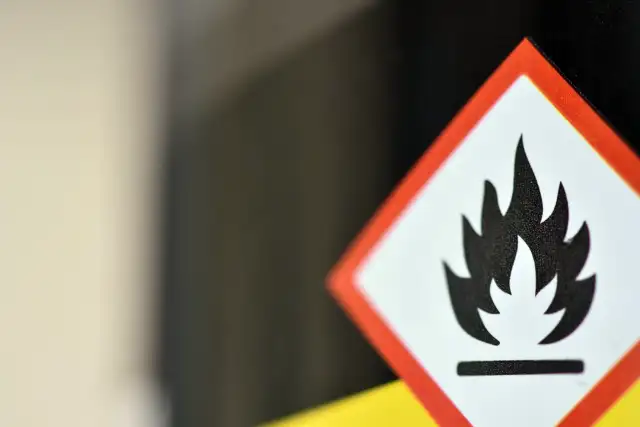Chemicals are essential in various industries, from manufacturing to healthcare and construction. While their applications are vast and invaluable, improper handling and storage can lead to serious workplace hazards, including injuries, illnesses, and even fatalities. Ensuring chemical safety is not just a regulatory obligation but a fundamental aspect of fostering a safe and productive work environment.
The Occupational Safety and Health Administration (OSHA) establishes stringent guidelines for managing hazardous chemicals to protect workers. These standards, primarily outlined in OSHA’s Hazard Communication Standard (HCS) and Process Safety Management (PSM) Standard, aim to minimize risks associated with chemical exposure.
Hazard Communication Standard (HCS)
OSHA’s HCS requires employers to inform and train workers about the chemicals they may encounter. The key components of HCS include:
Safety Data Sheets (SDS): Providing detailed information on chemical hazards and safe handling procedures.
Labeling Requirements: Ensuring that chemical containers are labeled with hazard warnings, pictograms, and preventive measures.
Training Programs: Educating employees about chemical exposure risks, emergency procedures, and proper protective equipment (PPE).
Process Safety Management (PSM) Standard
For workplaces handling highly hazardous chemicals, OSHA’s PSM standard establishes protocols to prevent accidental releases. These protocols include: Developing and maintaining comprehensive safety programs, conducting process hazard analyses, and implementing mechanical integrity and maintenance systems.
Common Chemical Hazards in the Workplace
Flammable and Combustible Materials
Hazard: Improper storage or handling of flammable chemicals can result in fires or explosions.
Examples: Gasoline, propane, and alcohol-based solvents.
Corrosive Substances
Hazard: Acids and bases can cause severe chemical burns to the skin, eyes, or respiratory tract, and they may corrode equipment.
Examples: Sulfuric acid, hydrochloric acid, and sodium hydroxide.
Toxic Chemicals
Hazard: Exposure through inhalation, ingestion, or skin contact can lead to serious acute or chronic health problems.
Examples: Benzene, mercury, and carbon monoxide.
Reactive Chemicals
Hazard: These chemicals can react violently when exposed to heat, pressure, or other incompatible substances.
Examples: Peroxides, lithium, and sodium azide.
Examples of Common Workplace Chemicals
Lead: Used in batteries, radiation shielding, and some paints. Prolonged exposure can cause neurological damage.
Respirable Crystalline Silica: Found in construction materials like concrete and stone. Inhalation can cause silicosis or lung cancer.
Hexavalent Chromium: Common in welding operations and anti-corrosion coatings. It can cause respiratory problems and increase cancer risk.
Best Practices for Chemical Safety
To ensure a safe workplace, Safety Consulting Specialists recommends the following ten best practices for chemical safety:
1. Conduct Regular Risk Assessments. A chemical risk assessment is a systematic process for identifying and evaluating potential hazards associated with using, storing, and handling chemicals in the workplace. It helps employers understand exposure risks, implement control measures, and comply with safety regulations to protect workers’ health. By addressing changes in chemical use or workplace conditions, regular assessments ensure a safer working environment.
2. Ensure Proper Labeling. Ensure all chemical containers are accurately labeled with OSHA-compliant information.
3. Control Storage of Chemicals. Store chemicals in designated areas with appropriate ventilation, temperature controls, and containment measures.
4. Provide Employees with Comprehensive Chemical Safety Training. Provide comprehensive training on handling, storage, and disposal procedures for chemicals. Include information on how to recognize hazards and respond to emergencies.
5. Maintain Easy Access to Safety Data Sheets (SDS). Keep SDS readily accessible for all chemicals used in the workplace. Train employees on how to read and interpret the information in these documents.
6. Use the Hierarchy of Controls. The Hierarchy of Controls is a framework for minimizing risks by prioritizing different types of hazard controls. The most effective solution is elimination. Discontinue the use of toxic chemicals when possible. If that is not an option, consider substituting a hazardous chemical for a less harmful alternative. Engineering Controls or administrative controls such as installing fume hoods, using automated systems to dispense chemicals, or implementing procedures for limiting the duration of chemical handling tasks can also be a way to control hazards. Finally, employees should be required to use Personal Protective Equipment (PPE). Ensure employees have access to and consistently use PPE such as gloves, goggles, respirators, or aprons based on the specific chemicals being handled. Remember that multiple control levels can be used together for optimal safety.
7. Maintain an Up-To-Date Inventory of all Chemicals on Site. Include information on quantities, storage locations, and potential hazards. Review and update the list regularly.
8. Perform Routine Inspections. Regularly inspect equipment and storage areas for potential hazards.
9. Foster Employee Involvement. Encourage workers to report safety concerns and participate in training sessions.
10. Prepare for Emergencies. Install and maintain emergency equipment like eyewash stations, safety showers and fire extinguishers. Train employees on emergency response procedures.
By understanding these hazards and implementing robust safety measures, workplaces can significantly reduce the risk of chemical-related incidents.
Safety Consulting Specialists’ Approach to Chemical Safety
With over two decades of experience, Safety Consulting Specialists provides tailored chemical safety solutions, ensuring compliance with OSHA standards and enhancing workplace safety culture. Our experts conduct thorough on-site evaluations to identify potential chemical hazards, assess compliance with OSHA regulations, and recommend corrective actions. These audits include reviewing storage conditions for flammable or reactive chemicals, assessing ventilation systems to prevent harmful exposure, and verifying PPE’s proper use and availability. Education is the cornerstone of chemical safety. Safety Consulting Specialists offers customized training programs that explain the significance of SDS and proper labeling, demonstrate safe handling techniques and emergency response actions, and address specific chemical hazards relevant to your industry. We also help businesses develop and implement robust emergency response plans.
Chemical safety is a shared responsibility, requiring diligence from employers, employees, and safety consultants. OSHA’s guidelines provide a solid framework, but it takes industry-specific expertise to tailor safety measures effectively.
Safety Consulting Specialists can help you achieve a safer workplace by identifying risks, enhancing employee awareness, and ensuring regulatory compliance—partner with us to prioritize chemical safety and protect your workforce and business.
For more information on our chemical safety services, contact Safety Consulting Specialists today!


